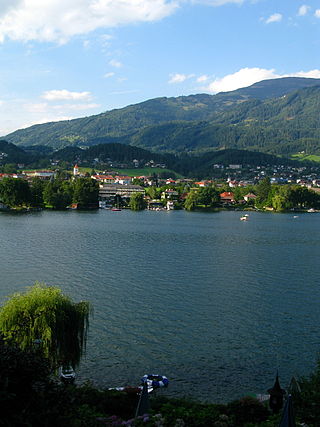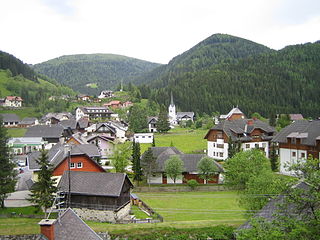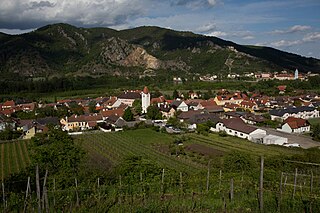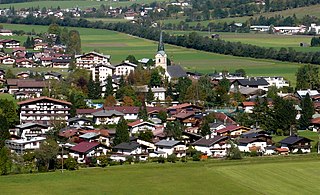
St. Johann im Pongau, a small city in the state of Salzburg in Austria, is the administrative centre of the St. Johann im Pongau District.

Pernitz is a town in the district of Wiener Neustadt-Land in the Austrian state of Lower Austria.

Krimml is a municipality in Zell am See District, in the federal state of Salzburg, Austria, in the Pinzgau region.

Reichenau an der Rax is a market town in the Austrian state of Lower Austria, situated at the foot of the Rax mountain range on the Schwarza river, a headstream of the Leitha.

Seeboden am Millstätter See is a market town in Spittal an der Drau District in Carinthia, Austria.

Steinbach am Attersee is a municipality of the Vöcklabruck district in the Austrian state of Upper Austria. It is situated in the Hausruckviertel region on the eastern banks of the Attersee, part of the Salzkammergut area.

Tamsweg is a market town in the Austrian state of Salzburg near the border with Styria. It is the administrative centre of the eponymous Tamsweg District (Bezirk) and the largest town of the Salzburg Lungau region.

Grundlsee is a municipality in the Liezen District of Styria, Austria. The municipality includes 151.54 km ² large parts of the Ausseerland and the Dead Mountains. The village is located directly on Grundlsee lake.

Reichenau is a municipality in the district of Feldkirchen in the Austrian state of Carinthia.

Feld am See is a municipality in the district of Villach-Land in the Austrian state of Carinthia.

Bad Sankt Leonhard im Lavanttal is a spa town in the district of Wolfsberg in the Austrian state of Carinthia.

Trumau is a town in the district of Baden in Lower Austria in Austria.

Rossatz-Arnsdorf is a town in the district of Krems-Land in the Austrian state of Lower Austria. It is located in the Wachau valley of the Danube, a popular destination for tourists, and has excellent views of the ruins of castle Dürnstein, where King Richard the Lion-Heart of England was held captive by Duke Leopold V.

Kleinzell is a town in the district of Lilienfeld in the Austrian state of Lower Austria.

Kirchdorf in Tirol is a municipality in the Kitzbühel district in the Austrian state of Tyrol located 12.2 km (7.6 mi) north of Kitzbühel as well as 3 km (1.9 mi) north of Sankt Johann in Tirol at the Kitzbühler Ache. By area, Kirchdorf is the second largest municipality in the district. The village obtained its name from an old church which was built in the 8th century. The main sources of income are agriculture and tourism.

Gries im Sellrain is a municipality in the Sellrain Valley in the western district of Innsbruck-Land. The village lies in the valley and the Melach River flows through it.
Leutasch is a municipality in the northern part of the district Innsbruck-Land in the Austrian state of Tyrol about 30 km northwest of Innsbruck and 10 km northwest of Seefeld in Tirol

Lingenau is a municipality in the district of Bregenz, in the westernmost Austrian state of Vorarlberg.
Pürgg-Trautenfels is a former municipality in the district of Liezen in Styria, Austria. Since the 2015 Styria municipal structural reform, it is part of the municipality Stainach-Pürgg.
Stainach-Pürgg is a municipality since 2015 in the Liezen District of Styria, Austria.





















